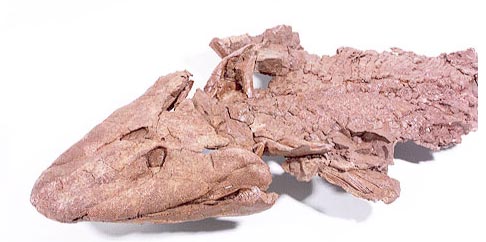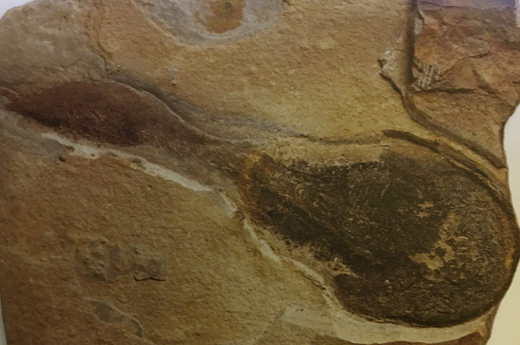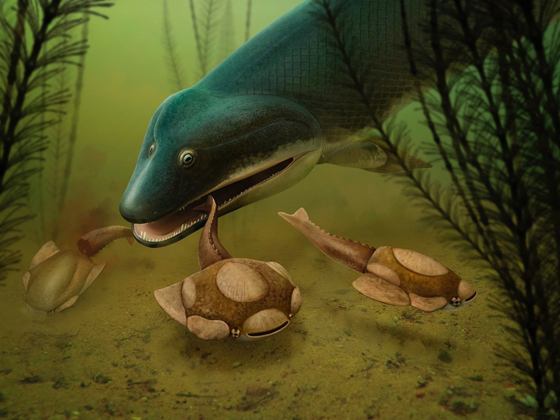Battle of the Early Vertebrates – Jawless Fish Lose Out
Bite Mark Analysis in Fossils Plots Demise of Jawless Fish
If you want to survive as a marine vertebrate, then become a powerful predator of your weaker contemporaries! That’s the conclusion in a new scientific report that plots the demise of the jawless fish and the rise to prominence of our own fishy ancestors. Writing in the academic journal the Proceedings of the Royal Society B (Biology), researchers from Manchester University conclude that a group of armoured jawless fish (heterostracans), may have been driven to extinction as a result of predation from jawed, transitional forms that show adaptations to a more terrestrial lifestyle.
In essence, one group of ancient fish may have been eradicated by a lineage of fish (sarcopterygians), that led eventually to the first land animals.
Plotting the Demise of the Jawless Fish
Picture credit: Julio Lacerda/The University of Manchester
Plotting a Changing Pattern of Bite Marks Preserved in the Fossil Record
Palaeontologists from the University’s Department of Earth and Environmental Sciences, examined over 2,800 fossil specimens, ranging over a timespan of some fifty million years (Wenlock series of the Silurian to the Late Devonian – 430 to 370 million years ago). The research revealed a changing pattern in preserved bite marks on early vertebrates and led to the conclusion that transitional sarcopterygians such as Panderichthys may have played a significant role in the demise of the jawless fishes (the agnathans).
It was a Fish Eat Fish World as Sarcopterygians Probably Played a Role in the Extinction of Most of the Jawless Fish

Picture credit: University of Chicago/Harvard/Academy of Natural Sciences
Diverse Agnathans
Nearly all the extant vertebrates have jaws, this includes birds, reptiles, mammals, amphibians and most types of fish. However, in the Silurian things were different. The jawless fish, the agnathans, were widespread, specious and very diverse. Towards the end of the Devonian, these types of fish seem to have gone into decline. Previous theories that examined the faunal turnover from jawless forms to fish with jaws considered climate change, environmental factors, competition and even predation by eurypterids (sea scorpions). This new study, proposes that it was jawed vertebrate predators that performed the “coup de grâce” on the majority of agnathans.
Scientists Dr Emma Randle and Dr Robert Sansom (University of Manchester), found that the frequency of bite marks increased through time, reaching a peak toward the extinction of most of the Agnatha. The pathology, interpreted as signs of predation on the fossil specimens studied, included gouges, scratches and puncture marks on the skeletons of heterostracans. The pattern of these bite marks correlated with the occurrence of jawed vertebrates and as such, those fish that are linked to the evolution of the tetrapods, including ourselves, may have predated upon and contributed to the extinction of most of the jawless fishes.
The Extinction of Most Jawless Fishes
Commenting on the research, Dr Robert Sansom stated:
“It is really exciting to be able to find direct evidence of an ecological interaction between fossil organisms from millions of years ago, especially one that helps us construct our own distant evolutionary history.”
Dr Emma Randle, currently a Scientific Associate at Birmingham University added:
“Heterostracan jawless fishes are really interesting as they are some of the first vertebrates to have bone – in the form of an armour-like ‘exoskeleton’. They thrived for many millions of years and came in a variety of beautiful forms often dominating the environments they were found within. Ultimately, like other varieties of armoured jawless vertebrates, they became extinct towards the end of the Devonian Period, but leave us a fossil record that helps us reconstruct the early evolutionary history of all vertebrates.”
The Fossilised Remains of a Silurian Agnathan (Ateleaspis)

Picture credit: Everything Dinosaur
The groups implicated as the main predators were placoderms, heavily armoured jawed vertebrates and sarcopterygians, the lobe finned fish. The predator most associated with bite marks was Panderichthys, regarded as a key transitional fossil leading to the evolution of the first terrestrial vertebrates.
The scientific paper: “Bite marks and predation of fossil jawless fish during the rise of jawed vertebrates” by Randle E. and Sansom R. published in the Proceedings of the Royal Society B.
The Everything Dinosaur website: Everything Dinosaur.


